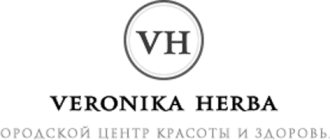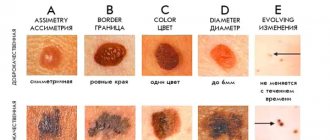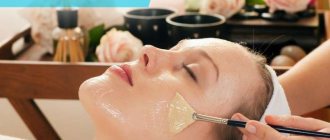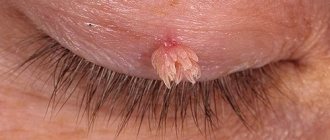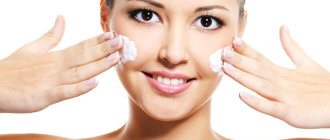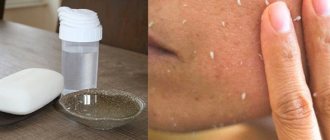Chemical peeling for the face (exfoliation) is a cosmetic procedure that allows you to renew the surface layers of the skin. With the help of weak acids, dying cells are dissolved and natural regenerative processes are stimulated. Due to this, the face becomes fresh and clean, pigment spots and minor defects disappear. Peels are often included in complex anti-aging programs, as they improve the penetration of other active ingredients into the skin, including hyaluronic acid.
Types and features of chemical peels
Chemical facial peeling procedures vary in the extent to which they affect the skin. The deeper it is, the more noticeable changes can be achieved. There are the following levels of exfoliation:
Surface cleaning.
The drug affects only the superficial layers of the epidermis, which contain no living cells. Such procedures are common, as they provide an opportunity to refresh the skin without pain and long recovery. If you have some experience, you can perform a chemical glycolic facial peel at home.
The superficial effect of acids helps eliminate hyperkeratosis, cleanse the sebaceous glands, and reduce acne. It helps to even out skin color and texture. This type of procedure is suitable for teenagers suffering from acne and increased oily skin. Can be used by people aged 25–30 years to combat initial age-related changes.
Medium chemical facial peeling.
The peeling agent penetrates the basal, spinous and granular layers of the epidermis, where viable cells are present. The papillary layer of the dermis is also affected. The manipulation may be accompanied by moderate discomfort, but no significant pain occurs.
Mid-level exfoliation is popular among people over 30 years of age. It allows you to tighten and smooth the skin, improve microcirculation, and restore the level of collagen and elastin production. Since acid chemical peeling of the face of this level affects quite deep structures, it is not recommended to carry out the procedure at home. If the cleaning technique is violated, post-peeling scars and hyperpigmentation zones are formed.
Deep chemical peeling.
Quite a serious manipulation, which is at the intersection of cosmetology and aesthetic medicine. Under the influence of the acidic composition, the skin is destroyed up to the middle of the mesh layer. The procedure is carried out only in a clinical setting with subsequent inpatient observation for 2–3 days. High-quality pain relief is required.
Deep peelings allow you to renew the collagen-elastin framework and stimulate the production of natural regenerative factors. With the help of such an effect, it is possible to eliminate shallow scars and scars, post-acne. Exfoliation is indicated for people over 45–60 years of age or people with significant cosmetic skin defects. Such deep cleaning is not carried out at home.
Choosing sunscreen:
Now some general information. We hear this word “peeling” quite often. What it is and why we, in principle, understand, but not very well.
Facial peeling. Brief overview. Which peeling should I buy?
The word peeling
is of American origin from the verb “peel”, which means “to remove the peel, peel, husk”, i.e., by word formation, “peeling” means the very process of removing this very skin. Even the beauties of Ancient Egypt and Rome used herbal compositions and mineral particles to cleanse and exfoliate dead skin layers. They knew that this was a very effective method of preserving the youth and beauty of the skin, and in addition, it allows you to eliminate various imperfections - freckles, scars, wrinkles. After this procedure, the skin will acquire freshness and a healthy tone, become smooth and velvety, and look much more toned and elastic. Let us repeat once again that the peeling effect lies precisely in the frequency of exposure to the dermis, which forces the skin to protect itself with a powerful response of collagen synthesis and, due to this, a rejuvenating and lifting effect.
Indications and contraindications
Chemical peeling of the face is carried out strictly according to indications. These include the following conditions:
- dry skin;
- increased secretion of the sebaceous glands;
- hyperpigmentation;
- post-acne scar changes;
- stagnant post-inflammatory spots;
- the need to update the cellular composition;
- wrinkles;
- prevention of age-related changes;
- preparation for skin lightening and other cosmetic procedures.
Acid chemical peeling of the face is not used if there are signs of an active herpetic infection, a history of allergic dermatoses, or taking oral retinoids. Their use should be discontinued 7-10 days before the expected date of the procedure. "Roaccutane" and "Tigazon" must be discontinued no later than 6 months before acid cleansing of the skin. The procedure is not recommended for people intolerant to photoprotective agents. In addition, it is contraindicated in patients with acute infectious or somatic diseases, oncological processes, diabetes mellitus, pregnancy and lactation, and the presence of keloids and warts in the intervention area.
Technique
A good chemical peel for the face in a cosmetic clinic is carried out in four stages:
- Cleaning and disinfection. The skin is treated with a special milk or gel containing a weak solution of glycolic acid with surface active components. This allows you to reliably degrease the areas to be treated and eliminate contamination. The use of soap is not allowed, as this leads to severe alkalization of the skin and reduces the effectiveness of peeling.
- Application of the active agent. Using a fan brush, a cosmetologist evenly treats the skin of the face in a certain sequence: forehead, temples, chin, neck, center. The preparation for chemical peeling of the face is not applied to the moving part of the eyelids. During the procedure, the cosmetologist constantly monitors the patient’s condition and maintains precise timing. A slight burning sensation is considered normal, but should not become unbearable. After diffuse erythema appears on the skin, proceed to the next stage of the procedure.
- Neutralization of acid. Deactivation of the peeling agent is carried out using a special neutralizer. It completely stops the drug from working. Residues of the base substance and neutralizer should be washed off with cool water. Chemical glycolic facial peeling does not require the use of deactivators. The product is removed from the skin surface by simple washing.
- Post-peeling care. After deactivating the acid, the cosmetologist treats the patient’s face with a special post-peeling cream. This is necessary, since during the procedure the epidermis is severely dehydrated and needs to compensate for fluid loss.
In the future, it is necessary to use sunscreens, moisturizers, and wash your face twice a day with a warm chamomile decoction without detergents. If your skin feels dry and tight, it is recommended to spray your face with a thermal spray. After medium chemical peels of the face, crusts form on the face and crack. It is forbidden to tear them down by force. Hydrocortisone ointment is applied to the damaged areas. Peeling and separation of crusts stops by 5–7 days after the procedure.
Peeling results
Facial skin peeling allows you to achieve the following positive changes:
- the color and texture of the skin becomes smoother;
- fine wrinkles disappear;
- deep wrinkles become less noticeable;
- a prolonged effect of skin moisturizing is achieved;
- the tone of the outer integument of the body increases;
- zones of hyperpigmentation are eliminated or become almost invisible;
- local immune reactions are enhanced.
Consequences if the procedure is carried out incorrectly
These changes are achieved after complete restoration of the skin. Until this point, a person may experience certain negative consequences, which soon go away on their own. These include:
- For superficial peeling – persistent erythema, dyschromia, infection, contact and allergic dermatitis. Similar reactions are accompanied by chemical glycolic facial peeling.
- For medium peeling – the appearance of a peeling crust and burn exudate.
- For deep chemical peeling of the face – the appearance of erythema, pastiness, local inflammatory reaction, swelling.
It must be remembered that all of these conditions fall into the category of expected and completely controllable. They do not pose a threat to life, health or appearance, and if all recommended recovery measures are followed, they pass without delayed consequences.
How to take care of your skin in summer?
Before going to the sea, peeling should be done a few days before the trip so that the tan lays evenly.
On the sea:
Sunbathe under a beach umbrella!
Use sunscreen and skin care cosmetics! There’s just a chance that you won’t have to deal with unwanted pigmentation later).
Upon returning home:
The first peeling should also be done after 7-14 days. The skin has been sufficiently damaged by the scorching sun; unnecessary intervention can also provoke irritation and even pigmentation. You are rested, relaxed, and here is your favorite skin, let it rest too. In a couple of weeks, when the first peeling from tanning begins, the skin will become rough, tough, wrinkles will be more pronounced, you can begin to care for it, starting with the peeling stage.
If you still have dry skin and it has become less elastic and irritated for any reason: from water, food, feeling of tightness in the morning is uncomfortable, then try applying an organic line mask.
Helps a lot!
There are two of them, one mask is for dry skin, the second is for oily, dehydrated skin. The line is new, but has shown itself very well. 95% natural ingredients! Summer will pass, the skin will recover, and then it will be possible to take on more active facial treatments, using professional facial peels, for example, with acids.
Blog of a cosmetologist: How to protect your skin from uneven pigmentation?
Closer to autumn:
But when the sun stops being active, we will begin more active care! Let's restore the skin and prepare for the cold season!
Read in more detail which peeling to choose in the fall, how the facial peeling procedure with acids is carried out and subsequent care after peeling. And we, for our part, will help you make a choice based on your task, age and skin type. And of course, skin conditions after summer!
In the meantime, what can you do for thin skin in the summer:
How to remove wrinkles and choose peeling for thin skin?
Dry thin skin, a finely wrinkled type of aging, as a rule, with improper care, very quickly turns into dry, dehydrated. Often, even washing with plain water causes a feeling of tightness and irritation.
Over time, even normal skin types become drier and the skin becomes thinner. If we talk about peelings, then the use of scrubs with abrasive particles irritates and thins the skin even more; microscratches cause rashes and inflammations similar to rashes of problematic oily skin. Our cosmetologist will help you build a care program. And what to do if neither natural oils nor moisturizing cosmetics help to radically change the situation?
Blog of a cosmetologist:
There are 4 main types of aging. Choice of care.
Why you can’t do deep peeling at home
Deep chemical peeling is an extremely serious procedure that affects all layers of the skin. To achieve the desired effect and prevent burns of excessive depth, you should strictly follow the manipulation technology and know the signs that require its immediate cessation. In addition, this level of cleaning must be done with adequate pain relief, which is not possible to provide at home. Attempts at independent deep chemical peeling of the face often end in complications such as:
- activation of herpes infection;
- skin infection;
- allergic reactions;
- severe inflammation;
- persistent erythema;
- persistent post-inflammatory hyperpigmentation;
- exacerbation of acne, seborrhea;
- increased skin sensitivity;
- marbling of the skin;
- the emergence of a demarcation line;
- pore expansion;
- the appearance of hypertrophic scars, keloids.
Which peeling product should you choose?
The choice of chemical peeling for the face is carried out in accordance with the goals set. The products vary in depth of penetration into the skin and pharmacological effects. The following compositions are most in demand:
1. Jessner's mixture (Hollywood). Consists of three components: salicylic and lactic acids, resorcinol. It has a gentle effect on the skin, is perfect for normalizing the functioning of the sebaceous glands, smoothing out unevenness and wrinkles. Typically used for entry-level facial chemical peeling procedures. Acts within the stratum corneum, removes the superficial layers of the epidermis. It extremely rarely leads to the development of side effects and does not require a long period of rehabilitation.
2. TCA. The drug contains trichloroacetic acid, which is highly toxic, has a cauterizing effect, and is absorbed through the skin. The product coagulates the protein structure, breaking intermolecular bonds. Belongs to the group of true catalytic substances. It is not advisable to use it for surface treatment. Typically, TCA is used for medium-depth peels.
3. Phenol-based products. They are a good chemical peel for the face, allowing you to act on the deep layers of the skin. They are characterized by high aggressiveness, fast and strong effect. Promote changes in the collagen-elastin pattern, thicken and compact the dermal layer. If used incorrectly, they can pose a threat to life and should not be used by people without appropriate training. Perfect for deep peeling. Due to rapid penetration into tissue, they are not used for surface treatment.
The chemical facial peeling procedure is a modern, highly effective way of skin renewal and rejuvenation without surgery. Widely used in beauty salons and aesthetic medicine clinics. Some types of it can be carried out independently, without visiting specialists. It should be remembered that such cleaning, in essence, is burning the surface layers of the skin with acid. When carrying out it, it is necessary to strictly follow the established algorithm and observe safety precautions. If the necessary skills are missing, it is recommended to seek help from a specialized center.


